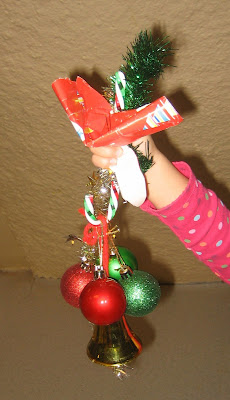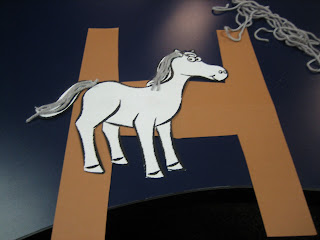This year is galloping by! We did a little horsing around with letter "H" this last week:

"H" Horses: This project was a little too teacher labor intensive (lots of cutting - I think I'll do something different next year).
I did like having the kiddos use scissors to cut the yarn and glue onto the horse's mane and tail.
Horse Play: I've been seeing all these ideas on blogs about setting up miniature pretend play areas. I gave it a whirl with our plastic horses. (The blue tray was the quickest container that I could come up with that was a good size. I think a box lid with some 2-3' sides would work well too. ) I taped green construction paper on top, added plastic trees, fence pieces from our farm sets, a little green tinsel (for grass) and our small plastic horses.

My 3's didn't care much for this activity - they pulled things off the tray and wanted to carry the horses around the room. My 4's, however, have been playing with the tray for 3 weeks now - it's a hit!
Other games we're playing:
Star Count and Match: (idea from the Mailbox Numbers for Little Learners book)
- Felt board
- Felt stars
- Number flash cards
For this game we sat in a circle around our felt board. I had the students close their eyes while I put a certain amount of stars on the board. Then they opened their eyes and I chose someone to count how many stars.

After we counted I put two number flash cards out and we chose which number matched the amount of stars.
Bean Toss: (idea from prekinders.com)
- Tray /felt
- Cup
- Lima beans (painted on one side)
 Toss the beans on the tray, sort the white from the red. Which is more? Which is less? Which color wins?
Toss the beans on the tray, sort the white from the red. Which is more? Which is less? Which color wins?
Block Stack, More & Less: (also from prekinders.com)
- Blocks (same size and shape)
- Die
We played a version of a block stack game a few weeks earlier, so the kids were familiar with the concept. We rolled the die, counted the dots and stacked the corresponding amount of blocks. Then we rolled the die a second time, made another stack of blocks and compared stacks.





























